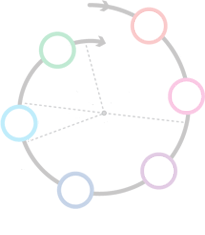Cases
These case studies of CCNMTL projects highlight the different stages that take place during the Design Research process. From initial curricular understanding to deployment and back again to discussions for future improvement, these projects show the progression and iteration which is essential within the Design Research spiral.
1. Discovery
Discovery emphasizes what is going on in the professor's classroom and identifies opportunities for improvements. In analyzing a course's curricular context, questions that emerge during discovery include: What are the new possibilities for learning? How could a digital educational environment serve as a meaningful extension of the already established curricular goals of a given course? What lessons can be learned from the use of digital media for teaching that can be carried over to future curriculum development?
2. Design and Development
With an initial curricular understanding and identifying the problems and challenges, the DR process focuses on the design and development hypotheses. How can technology be used to facilitate learning? We work with faculty to articulate and identify new media solutions to enhance the educational experience. These conversations inform the design and development of the educational experience and determine the content, activities, and interactions that constitute the learning environment.
3. Deployment
Once the learning environment has been constructed, it is simultaneously implemented and observed so that the original curricular, design and development decisions can be evaluated and, if necessary, changed.
4. Communication
Curricular, design and development decisions are evaluated and documented throughout the lifecycle of a project. This documentation is used for future iterations of a project and to conduct research on best practices.



